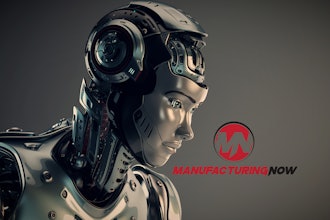Mergers and acquisitions (M&A) in the manufacturing space are set for an interesting year in 2019. As a sector that is often more cautious when it comes to M&A, there are certain signs that this mindset is beginning to shift as the industry changes and other forces come into play.
Where M&A is concerned, manufacturing is perhaps one of the most complicated industries because of the significant number of parties involved in the supply chain. When two manufacturing companies look to merge, the number of processes and systems that need to be aligned offer up a complex set of tasks that often take up a huge amount of resources.
Despite this, the industry is set to see healthy M&A activity in 2019, according to EY’s Mergers and Acquisitions U.S. Sector Outlook 2019. The global consultancy and accounting firm notes that, despite some uncertainties this year, the space will push ahead with M&A activity. EY adds that there are three key external factors that are set to impact M&A in the manufacturing space in 2019: technology, the middle market and geopolitical change.
As far as technology is concerned, the report notes that M&As in the industry will be driven by a need for manufacturers to evolve and become more efficient by acquiring technology to add to products, as well as move toward a more digital supply chain.
The middle market is set to see increased activity in 2019, according to EY, having previously taken a back seat to larger players. In fact, EY argues that if middle market players in the manufacturing space want to survive, they will have to find a niche to operate in and engage in potential M&A within their market range. If not, they will become acquisition targets themselves.
Manufacturing M&A is also set to be impacted this year by ongoing geopolitical changes we’ve all been witnessing. The U.S.’s trade war with China has already had an impact on various facets of manufacturing, with EY noting that in an industry that is already conservative in comparison to other industries when it comes to M&A, the current tariff tussle is making manufacturing M&A deals even less straightforward. Still, the consultancy notes that the sector will “push through the geopolitical uncertainty.”
Taking these factors into account, the manufacturers have a lot to think about in 2019. If you’re going to be involved in a merger or acquisition, or perhaps are already preparing for a future merger or acquisition, how can you manage the complicated task of tackling not just the factors that EY has outlined, but also all of the internal considerations, such as aligning supply chains, tying together the customer base, and merging order processes, software and ERP systems?
EY’s David Gale, global advanced manufacturing leader and co-author of the Mergers and Acquisitions U.S. Sector Outlook 2019 report, notes that manufacturing companies need to become more accustomed to thinking about digital within everything they are doing. “Look at the manual functions within your organization, can these be updated to perform automatically and digitally?” Gale says in the report.
The answer is, very probably yes, but the questions that then follow are how and what are the benefits? In terms of how, the answer lies in looking at what can be automated to ensure operational efficiency and health are maintained during a merger or acquisition. Order processing, invoice delivery and collections departments, for example, must continue with business as usual during a tie-up – they are critical to the day-to-day running of your business. If these are handled manually, the task of trying to align them between the merging organizations can be overwhelming and give rise to significant margin for error, including misplacement of documents, incorrect input of data, and clashing processes. Automated, these operations can bypass all of these complications and instead offer increased collaboration and transparency, streamlined cash flow management and a decrease in the cost of cash collection.
Additionally, when faced with the often-chaotic burden of managing a multi-ERP environment, having an ERP-agnostic automation system in place can take the pressure off IT teams struggling to get all of the other systems an organization needs to function operating smoothly. It also ensures that internal stakeholders have direct visibility into your order-to-cash cycle and offers real-time visibility into the status of any invoice or order, while decreasing the cost of cash collection and reducing your margin for error by validating and verifying information that would otherwise be input manually.
Let’s not forget about your customers. In their world, your merger is likely irrelevant, they expect the same level of service each and every day, regardless of what is happening to your processes and systems. If anything, they will expect the merger to bring positive changes for them (otherwise, why would you be doing it?). With the potential for having disparate systems operating in parallel during a merger and beyond, customer satisfaction can be put at risk, especially when your operational focus may be elsewhere. With automated systems, you won’t need to think about the risk of a lower level of customer service because your systems will continue doing what they’ve been set up to do. There’s no shift in focus and business continuity more broadly doesn’t need to be impacted.
When it comes down to it, the last thing anyone has time for during a merger or acquisition is shuffling paper and carting boxes of documents across offices. Trying to manually hunt down all of the information needed to not only merge processes, while also ensuring customers are impacted as little as possible, is a herculean task that is as time consuming as it is frustrating. If you can automate your back-office systems, allowing documentation to be archived prior to an acquisition, you will save yourself a lot of time, space and money going forward.
Steve Smith is U.S. chief operating officer at Esker, a worldwide leader in cloud-based document process software to automate order processing, accounts receivable, accounts payable, purchasing, and more. Smith is responsible for all operations in all of the Americas.






















